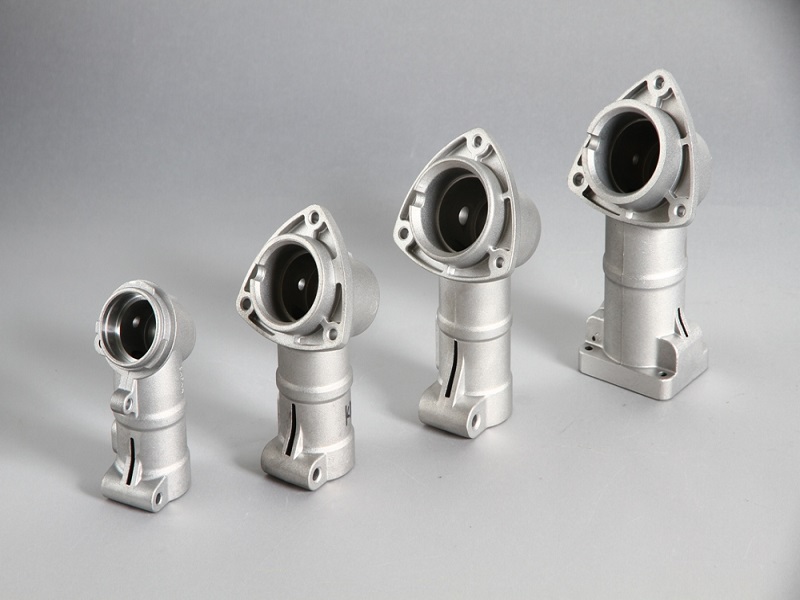FAQ

1. What is an Investment Casting?
Ans: The term “investment” may bring dollar signs before the eyes of those who are not familiar with the process. Actually, Investment refers to the ceramic materials that are used to build a hollow shell into which molten metal is poured to make the castings. The origin of the term investment comes from the solid mold process where a plaster type material is poured or invested into a container that holds a clustered tree of small plastic patterns that are identical to the casting being produced. Once the ceramic material is hardened, its internal geometry takes the shape of the casting. The wax is melted out and molten metal is poured into the cavity where the wax pattern was. The metal solidifies within the ceramic mold and then the metal casting is broken out. The wax models are engineered to be slightly larger than the casting due to the volumetric shrinkage of metal when it cools from a liquid to a solid.
2. What Kinds of parts are suitable for Investment casting?
Ans: The beauty of the investment casting process depends on the design freedom process affords of our engineers and designers. Due to its complex shapes, tight dimensional tolerances, excellent repeatability from part to part, excellent surface finish and a wide variety of alloy choices make investment casting a very cost effective solution to complex manufacturing challenges. The old and most common applications for investment casting that are familiar to include class rings and jewelry, knee, hip and other bio-implants, metal golf club heads and putters, rocker arms in internal combustion engines and the turbine blades in jet engines.
3. What alloys can be poured as an investment casting?
Ans: All the ferrous and non-ferrous materials can be called as investment cast. When the alloy is facing ferrous side then, carbon, tool and alloy steel along with the 300, 400, 15-5HP and 1 7-4PH stainless steels are most commonly poured and most of the aluminum, copper base, and other non-ferrous materials can be cast. Moreover there are super alloys used primarily in the gas turbine industry to produce blades and vanes. These alloys are usually composed of nickel and cobalt with a variety of secondary elements added to achieve specific strength, corrosion, and temperature resistant properties.
4. Why should we consider using investment castings?
Ans: Because the investment casting process offers many benefits including cost savings, design freedom, close tolerances, better finishes, and savings in machining time, reproducibility, and assembly savings. The below mentioned are few benefits why we consider using investment castings.
- Low initial tooling costs
- Elimination of material waste
- Design flexibility and capability
- Design enhancements
- Accurate and Consistency
- Close Tolerances
- Surface Finish Improvement
- Amortization Lowers Tooling Cost
- Better for the Environmen
5.Aren’t Investment Castings expensive?
Ans: While investment castings are usually more expensive than other casting processes and forgings, investment castings greatly reduce the overall cost of a metal component by reducing the amount of machining or welding and material waste that may occur. While investment castings are normally extra exclusive than fictitious parts or those produced by other casting methods, they make up for higher cost through the reduction of machining achieved through the near net shape firm tolerances that can be held as cast. Many parts that require milling, turning, drilling, and grinding to finish can be investment cast with only
6. What leadtime can you expect for an investment casting?
Ans: Once a part is approved for production, our lead-time is 4 weeks. There are times when our clients just don’t have the luxury of a standard delivery, so please contact us in such cases, so we can reduce this lead-time to meet your requirements wherever possible.
7. How does Investment Casting compare to the alternative production methods?
Ans: According to us Investment casting can be compared to different alternative such as Machining, MIM, Sand Casting, Forging, Die Casting for different such production methods. Our Investment casting is related with the complex design and geometries that are not possible for forging are all possible with investment casting. Although the latest technology machining equipment makes it possible to produce complex geometry parts, investment casting is always favorable for unit price in terms of high-volume demand and delivery duration.
8. Do we have the capacity / capability for large and / or small production?
Ans: YES, we create high quality, flexible and economical solutions to customer demands from hundreds to hundred thousands pieces. Our pride itself is meeting your specific requirements and deadline
9. What kind of surface finish should I expect if I don’t need to machine the parts?
Ans: Since the ceramic shell is built roughly smooth patterns shaped by injecting wax into a polished aluminum die, the resulting casting finish is excellent. Typically, a 125 micro finish is standard and even finer finishes can be obtained through common metal finishing operations such as blasting, polishing, or electro polishing. Sometimes a customer will have its own standards for surface blemishes (positives, negatives). These are discussed and agreed upon with the customer based on the function and cosmetic requirements of the part prior to release of the tooling order.
10. What information should I provide for a quotation?
Ans: For a clear, precise and timely quotation; we request, if possible:
- 2D technical drawing
- 3D model data
- Casting material / alloy information
- Yearly demand quantity and delivery lot-size
- Specific quality requirements / standards